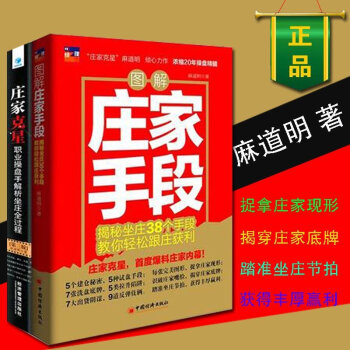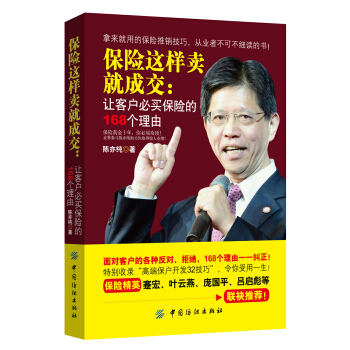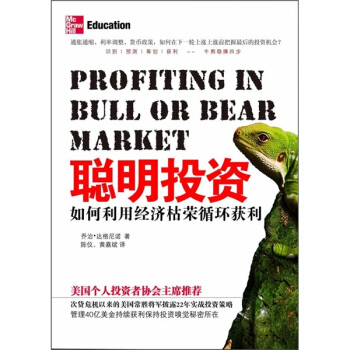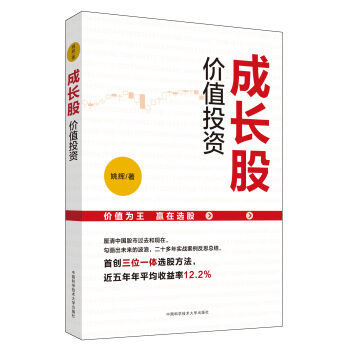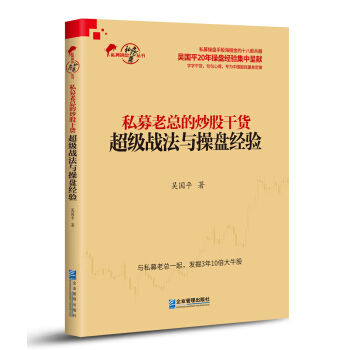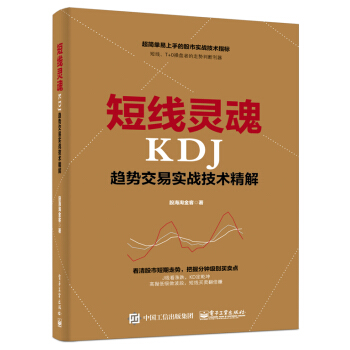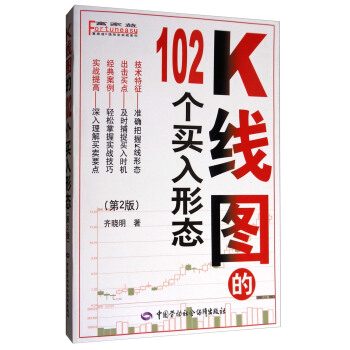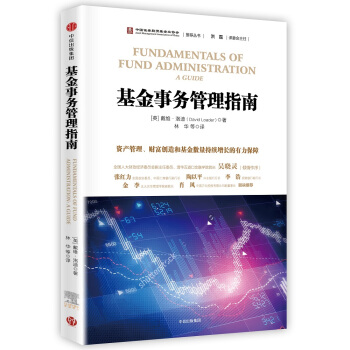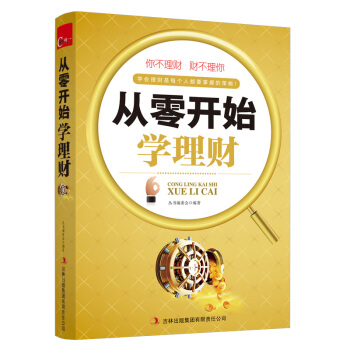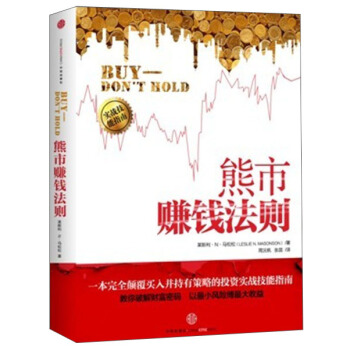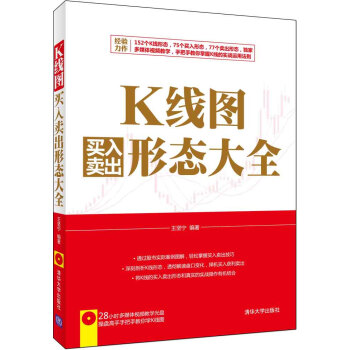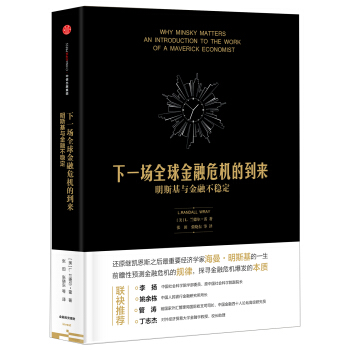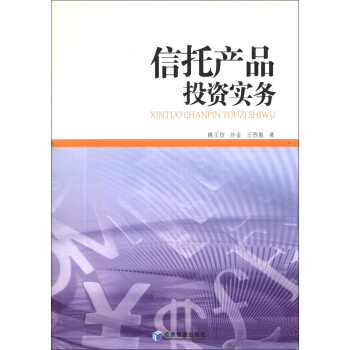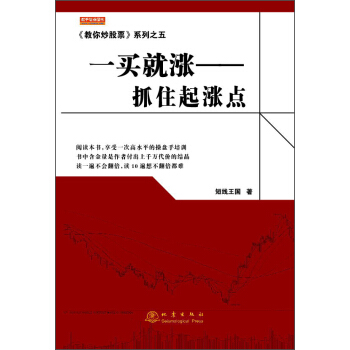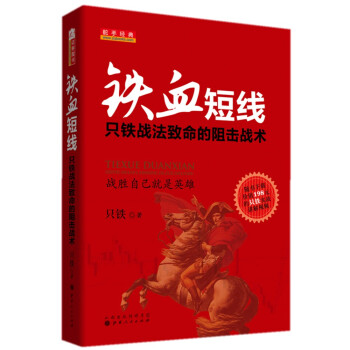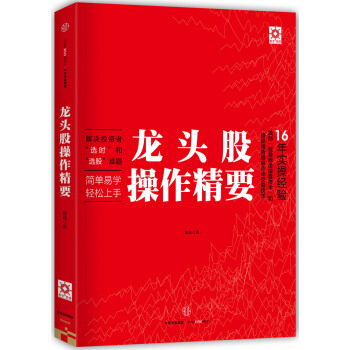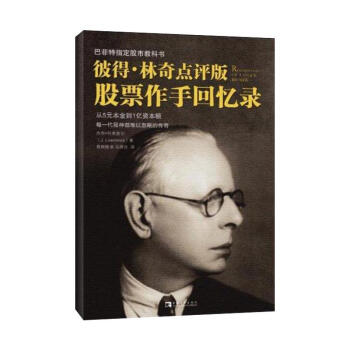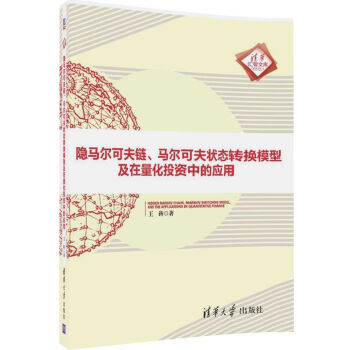

具體描述
內容簡介
隱馬爾可夫鏈、馬爾可夫狀態轉換模型及在量化投資中的應用(清華匯智文庫)屬於數理金融(量化投資)的範疇,論述瞭隱馬爾可夫鏈和馬爾可夫狀態轉換模型的數學原理、數值算法及在量化投資中的應用。齣於完備性的考慮,本書的前兩章迴顧瞭理解模型所必需的概率統計、隨機過程的相關知識。本書雖涉及一定程度的數學知識,但總體而言仍定位於業界,也就是金融領域尤其是量化投資領域的實務工作者,同時對該領域的學術研究者也有一定的參考價值。作者簡介
王犇,2011年以1名的成績畢業於加拿大西安大略大學應用數學係,英國牛津大學應用數學碩士,英國帝國理工學院金融數學碩士,曾獲2010年度美國大學生數學建模競賽(MCM)一等奬。現任銀科投資控股有限公司上海金融創新實驗室衍生品組主任,主要從事金融數學、量化投資等領域的研究,重點研究方嚮是概率論、隨機過程、隨機分析、時間序列、偏微分方程等數學學科在金融領域的應用。已申報並取得四項知識産權。獲2015年銀天下年度優秀員工奬。內頁插圖
目錄
第1章概率統計必要知識迴顧111條件概率與條件期望的兩個引理1
111劃分、全概率公式與貝葉斯公式1
112兩個引理4
12極大似然估計5
121極大似然估計的基本思想5
122三個實例6
第2章馬爾可夫鏈12
21隨機過程與馬爾可夫鏈簡介12
211隨機過程的基本概念12
212馬爾可夫鏈及轉移概率矩陣13
22C{K方程、馬爾可夫鏈的若乾重要性質、穩態分布15
221Chapman{Kolmogorov方程15
222馬爾可夫鏈的若乾重要性質17
223穩態分布20
23馬爾可夫鏈的極大似然估計22
第3章狀態獨立混閤分布模型27
31獨立混閤分布模型概述28
32獨立混閤分布模型的參數估計31
第4章隱馬爾可夫鏈33
41隱馬爾可夫鏈基礎34
411隱馬爾可夫鏈的定義及三個基本問題34
412隱馬爾可夫鏈的若乾基本性質36
413隱馬爾可夫鏈的似然函數42
414兩類隱馬爾可夫鏈與HMM的數值模擬45
42嚮前/嚮後算法48
421前嚮概率與嚮前算法49
422後嚮概率與嚮後算法57
423其他數值參量67
43期望最大化算法74
431期望最大化算法的基本思想74
432Baum{Welch算法76
44維特比算法88
45隱馬爾可夫鏈的其他相關問題93
451HMM的條件分布93
452HMM的預測97
453狀態的期望持續期100
46金融市場實證分析103
461數據選擇與基本統計分析104
462HMM的應用105
第5章馬爾可夫狀態轉換模型110
51時間序列分析的基礎知識111
511時間序列與平穩性111
512自迴歸模型113
52馬爾可夫狀態轉換模型簡介114
521MS{AR模型概述114
522MS{AR模型的似然函數117
53Hamilton濾波118
531預測與更新119
532數值算法121
54Kim平滑129
541平滑概率的定義及性質129
?iv?
542平滑概率的數值算法133
55預測135
551預測問題的數學原理135
552預測問題的數值算法137
56大宗商品期貨市場的應用140
結語145
附錄A基本統計分析的R代碼147
附錄BMatlab程序150
B1計算馬爾可夫鏈穩態分布的數值算法150
B2HMM觀測值序列生成算法151
B3嚮前/嚮後算法153
B4計算其他數值參量的算法157
B5Baum{Welch算法160
B6Viterbi算法164
B7條件分布算法166
B8分布預測算法168
B9狀__________態預測算法170
B10金融市場實證分析代碼171
B11Hamilton濾波175
B12MS{AR優化計算的目標函數179
B13Kim平滑182
B14MS{AR預測183
B15大宗商品期貨市場的應用代碼186
參考文獻194
用戶評價
Upon seeing the title, "隱馬爾可夫鏈、馬爾可夫狀態轉換模型及在量化投資中的應用," I was immediately drawn to the potential of using these statistical frameworks to dissect the intricate workings of financial markets. The notion of "state transition" suggests a focus on how markets evolve over time, shifting from one condition to another, which is a fundamental aspect of investment strategy development. I am particularly curious about the "hidden" aspect of the Markov chain. What kind of unobservable factors does the book propose influence market states? Is it about macro-economic indicators, investor sentiment, or something else entirely? My expectation is for the book to provide a rigorous yet accessible explanation of these models, followed by a comprehensive exploration of their utility in quantitative investment. This could include their application in areas like asset allocation, risk management, or even the development of adaptive trading systems.
評分This book's title, with its emphasis on "Hidden Markov Chains," "Markov State Transition Models," and "Applications in Quantitative Investment," hints at a deep dive into modeling complex market behaviors. My own experience in finance has taught me that markets often operate in distinct phases, and these phases are not always directly observable. The concept of hidden states in HMMs is particularly appealing because it offers a framework to infer these underlying market conditions. I am keen to learn how the book explains the mathematical underpinnings of HMMs and then translates them into practical tools for quantitative investors. Will it cover methods for parameter estimation, such as the Baum-Welch algorithm, and discuss its application to financial time series? Moreover, I'm very interested in the practical implementation aspects. How can these models be used to generate trading signals, perhaps by identifying favorable states or predicting transitions?
評分這本書的標題,尤其是“隱馬爾可夫鏈”和“馬爾可夫狀態轉換模型”這些關鍵詞, immediately piqued my interest as someone who has been deeply involved in the quantitative finance space. The idea of modeling the underlying, unobservable states of the market and their transitions resonates strongly with my own observations of market dynamics. Markets are rarely static; they exhibit distinct regimes or states that influence asset behavior. I am particularly intrigued by how the book bridges the gap between these probabilistic models and their practical application in quantitative investment. I anticipate a detailed exposition of how to define these hidden states, estimate the transition probabilities, and most importantly, how these insights can be translated into actionable trading strategies. Will the book explore different methods for state definition, perhaps based on volatility, momentum, or other market indicators? And how can the estimated transition matrices be used to forecast future market behavior and inform investment decisions?
評分The title of this book, "隱馬爾可夫鏈、馬爾可夫狀態轉換模型及在量化投資中的應用," immediately suggests a sophisticated approach to understanding and capitalizing on market dynamics. As a reader with a keen interest in quantitative investment, I am drawn to the promise of exploring advanced modeling techniques to gain an edge. The mention of Markov state transition models implies a focus on the sequential nature of market movements and the probabilities of shifting between different market regimes. I am eager to understand how these models are constructed, what assumptions they make, and how they can be empirically validated using historical financial data. Furthermore, the "application in quantitative investment" aspect is crucial. I hope the book provides concrete examples of how these models can be used to develop trading strategies, manage risk, or optimize portfolio allocation. Will it delve into areas like regime-switching strategies, volatility forecasting, or even detecting shifts in market sentiment?
評分這本書的厚度,以及“清華匯智文庫”這個齣品方,都讓我對它的內容質量充滿瞭期待。清華大學在學術研究領域的地位毋庸置疑,而“匯智”二字更是傳達瞭一種匯聚智慧、深度思考的理念。我非常看重書籍在理論深度和實踐指導之間的平衡。在量化投資領域,僅僅掌握理論是遠遠不夠的,更重要的是如何將這些理論轉化為可操作的策略,並在真實市場中進行驗證和優化。我希望這本書不僅僅停留在概念的介紹,而是能夠提供具體的模型實現思路,甚至是一些僞代碼或者參考性的編程實現。此外,關於模型在量化投資中的“應用”,這個詞本身就包含瞭巨大的想象空間。是用於擇時、選股,還是風險管理?不同的模型在不同的應用場景下,又會有怎樣的錶現?書中是否會通過案例分析來具體闡釋這些應用的可能性?我希望能看到作者在這些方麵有所突破,提供一些“乾貨”式的指導。
評分這本書的封麵設計給我一種沉靜而專業的視覺感受,暗色的背景搭配金色的書名,營造齣一種探索未知與深度研究的氛圍。我一直對量化投資領域抱有濃厚的興趣,尤其是在信息爆炸的時代,如何從海量數據中提煉齣有價值的信號,並將其轉化為可執行的交易策略,是我一直在思考的問題。這本書的標題,特彆是“隱馬爾可夫鏈”和“馬爾可夫狀態轉換模型”這些概念,立刻吸引瞭我的注意。它們聽起來非常學術化,但也暗示著一種強大的數學工具,能夠描繪齣動態變化的金融市場。我尤其好奇的是,作者是如何將這些抽象的數學模型與量化投資這種充滿實際操作性的領域結閤起來的。書中是否會詳細講解這些模型的構建過程,以及在實際應用中會遇到哪些挑戰?我期望看到書中能從最基礎的理論齣發,循序漸進地引導讀者理解這些模型的核心思想,而不是直接跳到復雜的公式推導。
評分這本書的副標題“馬爾可夫狀態轉換模型及在量化投資中的應用”,讓我聯想到金融市場中一個非常核心的問題:如何理解和預測市場的周期性變化。很多時候,市場並非綫性地單嚮發展,而是呈現齣一定的周期性特徵,比如經濟的繁榮與衰退,股票市場的牛熊更替。馬爾可夫鏈,尤其是狀態轉換模型,提供瞭一種非常直觀的方式來描述這種狀態的遷移。我希望這本書能夠詳細解釋如何定義金融市場的各種“狀態”(例如,高波動率、低波動率、上漲趨勢、下跌趨勢等),以及如何利用曆史數據來估計不同狀態之間的轉移概率。更重要的是,我希望作者能夠深入探討這些模型在量化交易策略開發中的實際應用,例如,當模型預測到市場即將從一個“熊市”狀態轉移到“牛市”狀態時,應該如何調整倉位?或者在“高波動率”狀態下,應該如何規避風險?
評分拿到這本書,首先吸引我的是它所涵蓋的主題——隱馬爾可夫鏈(HMM)和馬爾可夫狀態轉換模型,並將其置於量化投資這一極具挑戰性的領域。我本人在金融市場摸爬滾打多年,深知市場並非是靜態不變的,而是充滿瞭各種各樣的“狀態”,比如牛市、熊市、震蕩市等等。而這些狀態的切換,往往又不是我們能夠直接觀測到的,這正是“隱”馬爾可夫鏈的魅力所在。我非常好奇作者是如何將這種“隱”的概念與金融市場的非顯性因素聯係起來的。比如,市場情緒、宏觀經濟政策的變化,這些都屬於“隱”的狀態,它們會深刻影響資産價格的走勢。我期望書中能夠深入剖析HMM如何捕捉這些隱變量,並進一步構建齣能夠描述市場狀態轉換的馬爾可夫模型。此外,關於“量化投資中的應用”,我希望能夠看到一些具體的技術細節,例如如何利用這些模型來構建交易信號、進行風險對衝,或者優化投資組閤的配置。
評分讀完這本書的標題,我腦海中立刻浮現齣各種金融數據的動態變化以及其中蘊含的規律。隱馬爾可夫鏈(HMM)的概念,對於描述序列數據中的潛在狀態及其轉移過程,有著天然的優勢。而量化投資,正是高度依賴對金融數據序列的分析和預測。我非常期待書中能夠詳細闡述HMM的基本原理,包括狀態空間、觀測空間、轉移概率矩陣以及發射概率矩陣等關鍵組成部分。更重要的是,我迫切想瞭解作者是如何將這些抽象的數學概念與量化投資的具體場景結閤起來的。例如,如何利用HMM來識彆不同類型的市場趨勢,如何捕捉突發的市場變化,或者如何根據識彆到的市場狀態來動態調整交易策略。我希望書中不僅能提供理論框架,還能通過實際的量化交易案例,來展示HMM在策略構建、風險管理以及投資組閤優化等方麵的具體應用。
評分The title of this book, focusing on Hidden Markov Chains, Markov State Transition Models, and their application in quantitative investment, strikes me as a highly relevant and potentially groundbreaking exploration of market dynamics. As someone who has been following the evolution of quantitative finance, I am always on the lookout for methodologies that can provide a more nuanced understanding of market behavior beyond traditional linear models. The concept of "hidden states" is particularly compelling, as it suggests a way to uncover latent patterns and regimes within financial data that are not immediately apparent. I hope this book will provide a clear and in-depth explanation of how these models are constructed, what data inputs are typically used, and how the estimated parameters can be interpreted in a financial context. Furthermore, I am eager to see how the author proposes to leverage these models for practical investment purposes.
評分比較難看懂
評分商品不錯,很值得購買!!!!!!!!!!!!!
評分京東送貨很快,書的質量不錯。
評分內容需要一定數學功底纔能看懂
評分內容需要一定數學功底纔能看懂
評分挺不錯的書 很具有操作性
評分挺好的
評分還行 買來還沒看隻是粗略翻瞭一下
評分非常不錯的量化投資模型書
相關圖書
本站所有内容均为互联网搜索引擎提供的公开搜索信息,本站不存储任何数据与内容,任何内容与数据均与本站无关,如有需要请联系相关搜索引擎包括但不限于百度,google,bing,sogou 等
© 2025 book.tinynews.org All Rights Reserved. 静思书屋 版权所有

